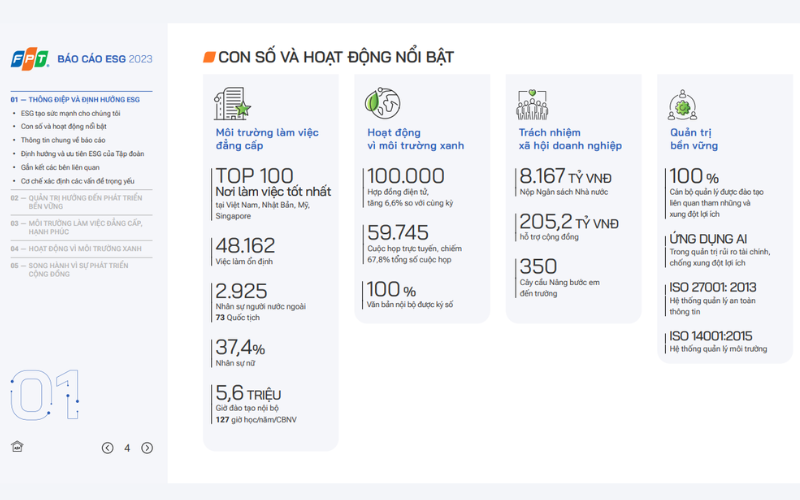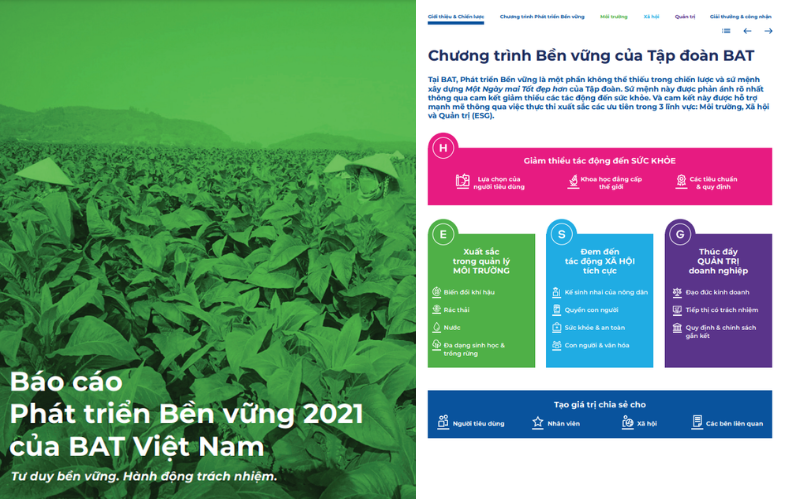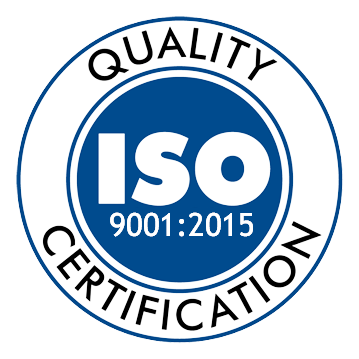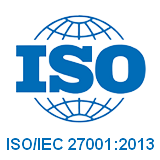Economic development in parallel with the problem of ensuring the elements of protected ecosystems planet such as the environment, pollution, ... are tend to be the countries in the world are interested, construction of the associated policy applies to business. In which, report ESG is one of the standard basic measurement is many businesses in the world and in Vietnam.
The Lac Viet find out details about this report, what is the detailed analysis content 3 factor E – S – G in the report and refer to the sample report ESG of business English.
1. Report ESG is what?
ESG is a standard measure the impact of a business on the environment, society as well as the business operation management. ESG stands 3 from Environmental, Social, and Governance
Specific
- Environmental aspects (Environmental) related to the business impact as to how nature, including management of natural resources, greenhouse gas emissions, the initiative to protect the environment.
- Social aspects (Social) focus on how businesses manage relationships with employees, suppliers, customers, the community where the business operates. Includes elements of diversity and equality in the working environment, social responsibility.
- Aspects of Governance (Governance) related to management structure, business ethics, transparency, accountability, ensuring that businesses comply with the rules, ethics, laws, there is a system of effective governance.
Accordingly, Report ESG will provide comprehensive information on the performance of the enterprise in the implementation of the objectives of environmental, social and governance. ESG is not just a standard set which is also strategic approach to help businesses build credibility towards sustainable development.
Performance reporting ESG aims to assess the extent to which businesses have made the commitment to ESG in time past; identify areas in which business can improve to improve ESG performance, thereby contributing to sustainable growth; Based on the findings in the report, the business will propose specific actions to continue to raise the standard ESG in next time.
- System monitoring what is energy? The optimal solution to help businesses save energy
- Hydrogen what is green? New direction for the business sustainable production
- GHG Protocol what is? Implementation guide standard measurement international for business
- ISO 14064 is what? Detailed instructions building system standards credits carbon international
2. The importance of ESG and the level of readiness practice ESG in Vietnam
ESG is increasingly becoming important factors for investors, customers. Compliance with the good performance of the standard ESG not only helps businesses minimize risk, but also enhance the brand value.
Applying ESG can bring many benefits, including strengthening the trust of investors, attracting the best talent, maintain good relationship with the community. In addition, it also helps businesses better prepare for the challenges of the environment and society in the future.
A growing number of countries, the organization requires businesses to be transparent and accountable in the matter ESG forcing companies to report, improving ESG performance in a continuous manner.
In Vietnam, according to a report from PWC about the level of readiness practice ESG of business for most of the businesses in Vietnam, just start the new journey ESG.
- 66% of Businesses are implementing the program ESG
- Only 24% of businesses have governance structures clear
- 35% of Businesses have the active participation of The board of directors on issues of ESG
- 28% of Businesses have indicators to measure risk, ESG, clear to follow the progress
- 71 % of Business understanding of the data required to report ESG
- 70% Business no or limited
- 36% of Businesses use external services to perform reporting ESG
In general, businesses in Vietnam have noticed the value of the
deployment program ESG.
3. Content 3 factor E – S – G in the report
3.1 Environmental (Environmental)
In reporting on the environment, business focused situation analysis of the impact specific to aspects such as:
- Assess the level of greenhouse gas emissions (GHG) of the business in the production activities, operating the supply chain.
- Consider the use of energy, including the rate of use of renewable energy compared with the energy from the source is not renewable.
- Analysis of the source emission privacy, for example, from the factory, transportation, or industrial processes other.
- Reviews the use of natural resources like water, land, minerals in the operation of the business.
- Presents the measures for the conservation, management of natural resources, such as water recycling, sustainable land management, recycling waste.
- Consider the impact of mining operations, resource use on the environment surrounding communities.
Based on the effects of this influence propose solutions,
- Policy on reducing greenhouse gas emissions, for example, is committed to reducing the amount of carbon according to a specific route.
- Measures energy savings are being applied, such as use of technology, energy saving, improved manufacturing processes, optimization operation.
- Measure recycling, re-use of waste, minimize hazardous waste and optimize production processes to reduce the amount of waste arising.
- The new technology is applied to minimize environmental impact, such as production technology, clean technology, waste water treatment, advanced, or the management system, intelligent energy.
- Commitment to your new business in continuing to promote innovation and development of environmental initiatives in the future.
Finally the results made during the reporting period
- Provide data on the reduction of greenhouse gas emissions during the reporting period.
- Presents the progress that has been achieved in enhancing the use of renewable energy and reduce energy consumption.
- Given the project or initiative has been successful in reducing the environmental impact.
- The project to protect the environment in which business was done, as the programme planting trees, ecosystem restoration, or conservation of biodiversity.
- The program of cooperation with local authorities, non-governmental organization, or community to protect the environment.
3.2 Social (Social)
Social factors will include 3 aspects of how business impact – affect employees, customers and social community.
Policy support personnel:
- Analysis of personnel structure of the business of diversity, including gender ratio, age, ethnicity, religion, disability, or sexual orientation. The same policies that businesses are made to promote equity, inclusion in the work environment
- Consider factors such as working environment, safety, hours of work, wages, other benefits of the employees. In particular, pay attention to the protection of labor rights, health insurance, the balance between work and life. The same benefit programs for employees, including health insurance, paid vacation, family support, personal development such as training, promotion.
- Presents the programs, professional training, soft skills, advanced courses for employees. Clearly stated goals of these programs and the importance of improving human capacity in the strategic development of the business.
Responsibility to community social:
- The goal long-term commitment to the community in the strategic development of business, introduction to community projects which business is done, such as programs to support education, health care, environmental protection or economic development, local time.
- Strategic partners in community activities, including local authorities, non-governmental organizations, social groups. Introducing the initiative, a new partnership aimed at addressing the social issues of urgency, such as reducing poverty, raising awareness about climate change, or development, sustainability education.
- How business listen to feedback from the community, use of this feedback to adjust their strategies to better meet the needs and expectations of the community.
Responsibility with customers – consumers:
- The policy rules to protect consumers ' rights, as policy, product warranty, return goods, data privacy, privacy of customer information. Processes that ensure product quality from design, production to after-sales service.
- Specify how quality management to ensure that products and services meet the highest standards. System support customers, including the channels of communication services, customer care, process for dealing with complaints.
- Process standards to ensure product safety for consumers as process quality inspection, product testing, compliance with safety standards, national or international. Handle situations related to safety products, such as withdrawal of defective products, solve the problem, notify the customer in a timely manner transparent.
3.3 Governance (Governance)
About element management reports should indicate information such as system structure, corporate governance, ability to handle crisis risks; transparency in finance.
Structure management system:
- Shown in detail about the structure of the board, including number of members, expertise, experience, gender, age. Refers to the roles and responsibilities of the committee in the council such as committee audit committee remuneration committee nomination. Mechanisms to monitor each other to ensure that strategic decisions are taken out of transparency, is not affected by conflicts of interest.
- Presentation on policy and process published information, ensure that the business implementation of the financial statements, non-financial in a transparent manner, promptly as statements ESG, management reports, financial statements according to the international standards.
- Description of the system of internal control to detect and prevent financial irregularities, fraud or mismanagement. The ethical rules that apply enterprise, including the rules of conduct and regulations on anti-corruption, bribery, conflict of interest.
Risk management and crisis:
- Present the strategy to management to minimize risk, such as insurance contracts, the department of finance, the process safe operation. How business continuous risk monitoring, updates the strategy risk management based on the changes in the business environment and legal.
- Plans for the crisis as process, fast response, communication, crisis, measures to protect the assets, reputation of the business.
Financial transparency and accountability:
- Presentation on the policy – process of financial management of business, including accounting, budgeting, cash flow management. Refers to measures of financial control and compliance with the accounting standards the international.
- Ensure transparency in the financial statements: disclosure full, accurate financial information to shareholders, stakeholders. Presentation about the process of the independent auditor and the way businesses handle the detection audit.
- Detailed description of the process, internal audit, external audit of the business, including the role of the audit committee in monitoring to ensure the accuracy of the financial statements.
- Presentation on how to monitor implementation of the recommendations following the audit in order to improve process management and financial control.
4. Refer to the sample report ESG from the business in Vietnam
4.1 report ESG FPT 2023

>>> See a few download report ESG FPT AT THIS
4.2 report ESG ACB 2022

>>> See a few download report ESG ACB AT THIS
4.3 reporting ESG BAT Vietnam

>>> See a few download report ESG ACB AT THIS
Hope the information about report ESG is Vietnam introduced in the article to support business approach quickly and clearly understand about this report. Progress to sustainable development is one of the developing trends for the global economy and performance reporting ESG testament to the commitment to the responsibilities of business with regard to public social.
CONTACT INFORMATION:
- Lac Viet Computing Corporation
- Hotline: 0901 555 063 | (+84.28) 3842 3333
- Email: info@lacviet.vn – Website: https://lacviet.vn
- Headquarters: 23 Nguyen Thi Huynh, P. 8, Q. Phu Nhuan, Ho Chi Minh city













